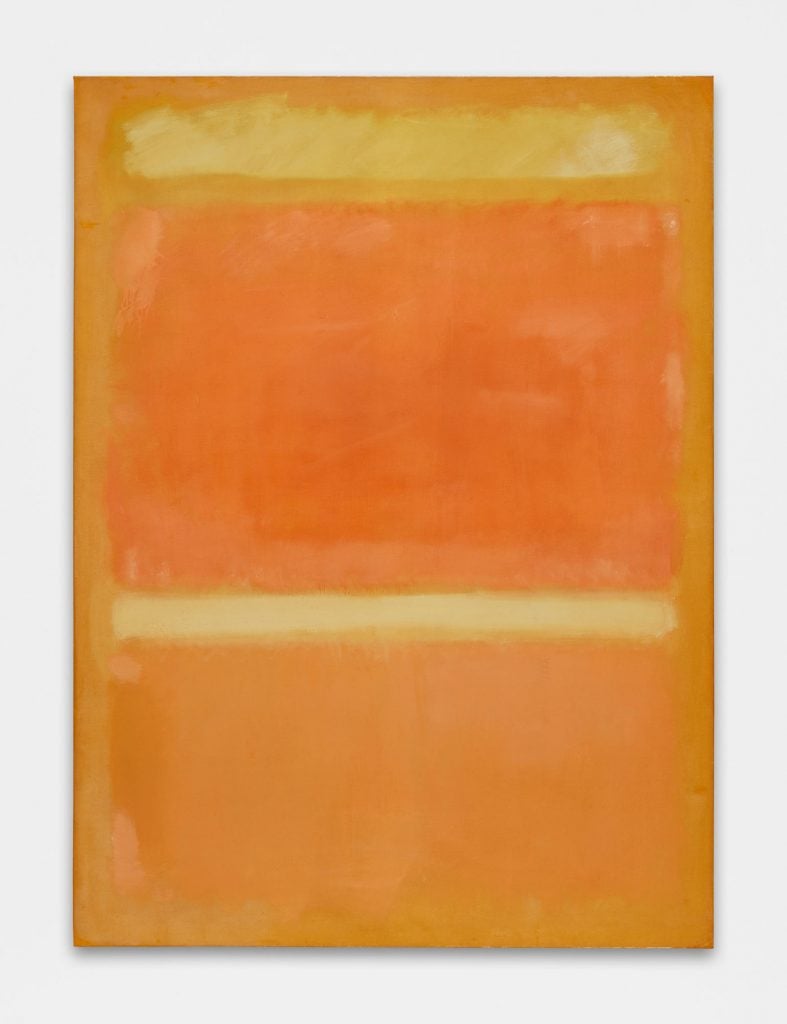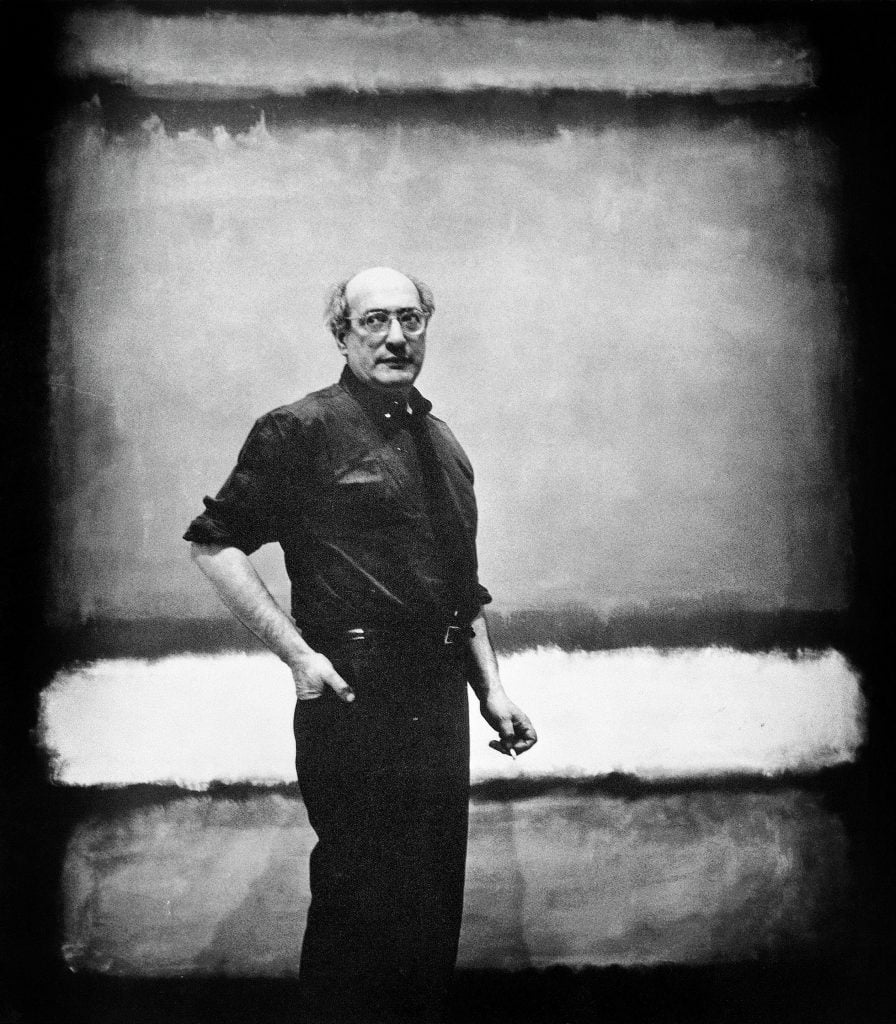Auctions
A Golden Rothko Shines at Christie’s as Passion for Abstract Expressionism Endures
Mark Rothko's sublime canvas is one of the highlights of the auction season.

Mark Rothko's sublime canvas is one of the highlights of the auction season.

Raquel Laneri

Any painting created nearly 80 years ago would most certainly have something of a storied past. But the history of Mark Rothko’s Untitled (Yellow, Orange, Yellow, Light Orange), painted in 1955, is what made its sale at Christie’s New York on November 9 particularly worth watching.
A towering, seven-foot-tall work in sunset hues, the canvas was a highlight of a stacked auction that included record-breaking works by other mid-century abstract artists, including Richard Diebenkorn, Joan Mitchell, and Joan Snyder. Ultimately, the painting grabbed $46.4 million, a little over its estimated $45 million, making it one of the evening’s top sellers.
Much of what made this particular Rothko such a focus was the fact that Untitled (Yellow, Orange, Yellow, Light Orange) has changed hands multiple times in the past decade. Sotheby’s sold it in 2014 for $36.5 million at the legendary sale of the collection of Paul and Bunny Mellon, who had held onto it for half a century, acquiring it from Rothko’s own collection after his untimely death in 1970. The winning bid at Sotheby’s came at the last minute from dealer Helly Nahmad, who then sold it privately for an undisclosed amount to Thursday night’s consignor, Steve Wynn.

Mark Rothko, 1961. Courtesy of Kate Rothko/Apic/Getty Images.
The Rothko’s recent journey is testament to the evergreen strength of Abstract Expressionist works, which tend to appreciate quickly, even as ultra-contemporary figurative painters (who dominated Christie’s 21st century art sale earlier this week) command the headlines. Indeed, while the work found no buyers with an asking price of $60 million at Art Basel, Untitled (Yellow, Orange, Yellow, Light Orange)’s $10 million jump in price remains testament to how hungry collectors are for these kinds of works, and to the enduring appeal of Rothko. (Similarly, Diebenkorn’s 1965 painting Recollections of a Visit to Leningrad sold for an eye-popping $46.4 million Thursday night, shattering his previous record.)
“Rothko stands among the giants of 20th century art,” Alex Rotter, chairman of 20th and 21st century art at Christie’s, said in a press release. “His work continues to awe viewers of all generations, creating a deep emotional impact—a religion-like experience for those who stand before it.” Untitled (Yellow, Orange, Yellow, Light Orange), Rotter added, is “a best-in-class example.”
Rothko painted the work the year of his first solo show at the Sidney Janis gallery in New York. For that breakthrough exhibition, the artist unleashed a torrent of new abstractions, canvases comprising intense planes of color that nearly envelop the viewer in their emotive and visual power.
Rothko attributed this shift in his art to seeing Henri Matisse’s The Red Studio at the Museum of Modern Art in Manhattan. That strange 1911 masterpiece dramatically altered Rothko’s sense of color. He said, according to his son Christopher Rothko: “When you looked at [the Matisse], you become that color, you become totally saturated with it.” Rothko aimed to achieve a similar feeling with his work, his friend Murray Israel told biographer James E.B. Breslin, so that “when you turned your back to the painting, you would feel that presence the way you feel the sun on your back.”
“We could not be more thrilled to have this masterpiece as a leading highlight this season at Christie’s—notably alongside the artist’s international retrospective at the Foundation Louis Vuitton in Paris,” Rotter added.

Joan Mitchell, Untitled (ca. 1959). Courtesy of Christie’s Images, Ltd.
The entire evening brought in $640.8 million, selling 97 percent by lot and breaking seven artist records. And American abstractionists—in addition to Rothko—fared particularly well.
The appetite for abstractions by female artists, from Agnes Martin to Lynne Drexler, was equally apparent at the Christie’s sale, where both Joan Mitchell and Joan Snyder broke their records for works sold at auction. Mitchell’s circa-1959 Untitled—a 7-foot riotous explosion of color in the artist’s signature sweeping, muscular brushstrokes—netted $29.2 million. And Joan Snyder’s 1973 The Stripper, in which she used strips of painted canvas to create textured horizon lines, fetched an astounding $478,800, against a low estimate of $80,000. All of which confirms, yet again, that Abstract Expressionism remains fresh, and hotly in demand.